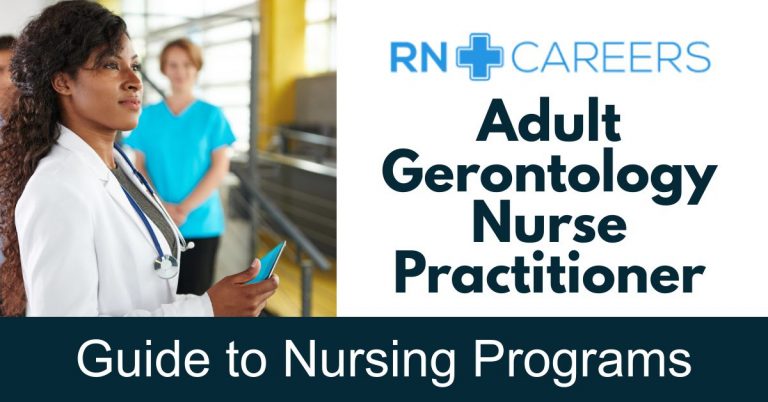Nurse Practitioner vs Physician Assistant Key Differences
Before getting into the difference between a Nurse Practitioner (NP) and Physician’s Assistant (PA), we should probably define the general healthcare provider category that they fall into. NPs and PAs are what we call midlevel providers. This means that they are not medical doctors but have some additional privileges and responsibilities in comparison to nurses.
Midlevel providers see patients for routine exams, sick visits, round on patients in hospitals, prescribe medications, order labwork and imaging, and do minor procedures. Midlevel providers have at minimum a master’s degree and earn their degrees after 2-3 years of studying. Both NPs and PAs make competitive and similar salaries. They also have similar job descriptions in their given clinical settings. However, there are some key differences between NPs and PAs that we will cover here.
NP vs PA: Key Differences in Education, Licensing, Practice Authority and Careers
- Population focus: While NPs need to choose a population focus when they enroll in their program, PAs do not. They are trained across multiple ages and disciplines. This gives them a bit more flexibility later in their careers where they can change populations or specialties that they work in. NPs can also change their clinical focus, but they cannot change populations without re-certifying. For example: a, Adult Gerontology NP cannot work with children.
- Supervising physicians: Most states require that PAs have a practice agreement with a physician where they work. For NPs this depends on the state. In some states NPs can have their own practice while this is not an option for PAs.
- Program length: In general PA programs take about 3 years. NP programs are typically 2 years in length though some may be 3. A lot of this depends on if you enroll full-time or part-time, and what type of NP program you are doing.
- Prior clinical experience: PA schools typically require that you have a minimum of 1000 hours of prior clinical experience. Whether this is through prior EMT work, nursing, or other clinical fields it does not matter as long as it involves direct care. NP schools do not necessarily require previous clinical experience.
- Transitional programs: Because all prospective PAs are required to have a Bachelor’s degree, there are no “Direct Entry” options or transitional programs for RNs without BSNs.
- More clinical hours: PA programs require around 2000 hours of hands on supervised clinical experience during the 3 year program. NP school requirements are less. Part of this is because many NPs also have experience as nurses, and part of this is because NPs do not do rotations in surgical specialties.
- Different education models: PA school is modeled after the medical school curriculum while NP school is more nursing focused and holistic in nature.
- Certification and Licensure: Since the two professional roles are regulated by different professional bodies, there will be differences in certification and licensure. NPs need to be an Registered Nurse (RN) first, and take their certification exams through their certifying body. Then they must apply for licensure through the Board of Nursing in their state. When PAs finish school they take the Physician’s Assistant National Certifying Exam. Then to become licensed they need to apply through the appropriate board in their state. This is usually a medical board or PA specific board.
Table of the Differences: Nurse Practitioner vs Physician Assistant
Nurse Practitioners (NPs) and Physician Assistants (PAs) have unique roles and responsibilities in the healthcare industry. To compare them, here’s a table of key differences:
Here is a markdown table comparing some key aspects of nurse practitioners (NPs) and physician assistants (PAs):
| Roles and Responsibilities | Nurse Practitioner | Physician Assistant |
|---|---|---|
| Education | Master’s degree in Nursing (MSN) | Master’s degree from accredited PA program |
| Prerequisites | RN license + Bachelor’s degree in Nursing | Bachelor’s degree |
| Program Length | ~2 years | ~2-3 years |
| Focus | Patient care across the health/illness continuum | Medical model of diagnosing and treating illnesses |
| Training | Advanced clinical nursing practice | Rotations in medical and surgical specialties |
| Specialties | Family, adult-gero, neonatal, etc. Specialize in population focus | Same specialties as physicians |
| Prescribing Rights | Can prescribe medications in all 50 states | Can prescribe medications in all 50 states |
| Oversight Required? | Varies by state; can practice independently in many states | Most states require some physician supervision |
| Settings | Clinics, hospitals, nursing homes, schools | Clinics, hospitals, surgical centers |
What Is a Nurse Practitioner?
A nurse practitioner (NP) is an advanced practice registered nurse who has additional education and training beyond the registered nurse (RN) level.
- NPs hold a Master of Science in Nursing (MSN) degree and are trained to assess, diagnose, and treat patients as well as provide education and counseling.
- Their focus is holistic care that concentrates on the “whole person,” taking into account mental health, family dynamics, socioeconomic factors, etc. along with a physical exam and diagnostics.
- In addition to clinical practice, many NPs also serve in research, education, leadership, policy and other advanced roles drawing on their specialized graduate training and knowledge base.
- NPs are licensed advanced practice nurses who can prescribe medications in most states. Depending on the state, they may practice independently without physician oversight.
- They work in a variety of settings like hospitals, clinics, urgent care, nursing homes, and private practices, often serving as a patient’s primary healthcare provider.
In summary, a nurse practitioner blends advanced clinical nursing practice and skills with tasks often carried out by physicians, such as diagnosing illness, prescribing medications, and managing treatment plans. The NP role offers RNs an opportunity to expand their knowledge, training, pay and autonomy.
What is a Physician Assistant?
A physician assistant (PA) is a licensed medical professional who practices medicine under the supervision of a physician. Some key aspects of a PA’s role and qualifications:
- PAs obtain a master’s degree from an accredited PA educational program. The typical program length is 2-3 years for candidates who have already completed an undergraduate degree.
- Their education includes classroom instruction in subjects like anatomy, physiology, pharmacology, pathology, clinical laboratory science, health promotion strategies, and medical ethics. It also includes extensive clinical rotations in medical and surgical specialties.
- PAs are trained to conduct patient interviews and physical exams, diagnose illnesses, develop treatment plans, prescribe medications, assist in surgeries, coordinate care teams, provide patient education, and conduct research.
- They practice in physicians’ offices, hospitals, clinics, and other healthcare settings in collaboration with a supervising physician, although in some states they can practice more autonomously.
- PAs perform medical duties similar to physicians and are able to prescribe medication in all 50 states. However, the physician has ultimate responsibility for the care provided by the PA.
In essence, a physician assistant is an increasingly vital member of healthcare teams who helps expand access to care and treatment under physician guidance. The PA role offers opportunities to directly provide a wide range of medical services while also enjoying excellent compensation and career advancement prospects.
What Does a Nurse Practitioner Do?
A nurse practitioner (NP) is an advanced practice registered nurse who has additional responsibilities for administering patient care compared to registered nurses. Some key duties and aspects of a nurse practitioner’s job include:
- Taking comprehensive health histories and providing physical exams for patients across lifespans from pediatric to adult to geriatric care. This includes ordering, performing, and interpreting diagnostic tests such as lab work and x-rays.
- Diagnosing acute and chronic illnesses and developing individualized treatment plans for patients that often include prescribing medication. NPs can prescribe medication in most states with some regulations.
- Providing primary and specialty healthcare services like managing chronic health conditions, performing minor procedures, ordering therapies, and counseling patients on health, wellness, diet, self-care skills and preventative medicine topics. Many NPs serve as a patient’s primary healthcare provider.
- Referring patients to physicians and specialists for further diagnosis or treatment when cases fall outside of the NP’s scope of practice. NPs collaborate closely with physicians as part of healthcare teams.
- Educating patients and families on complex health topics related to medical diagnoses, treatment options, medications and self-care in an easy-to-understand manner.
- Maintaining detailed patient records including health history, exam notes, treatment plans and patient communication.
The advanced nursing education, training and scope of practice enable nurse practitioners to work rather independently while still collaborating within healthcare teams to provide a wide range of individualized, accessible, patient-focused services.
What Does a Physician Assistant Do?
A physician assistant (PA) works as part of a healthcare team practicing medicine under the supervision of a licensed physician. Some key aspects of a PA’s job role include:
- Taking medical histories, performing physical exams, ordering and interpreting tests for patients across healthcare settings.
- Diagnosing acute and chronic illnesses and developing treatment plans often in collaboration with supervising physicians.
- Prescribing medication for patients as allowed by state laws and supervising physician oversight. Scope of prescription privileges varies by state.
- Performing common procedures like suturing lacerations, casting fractures, wart removal, injections, IV placement and lumbar punctures. Privileges vary by practice setting.
- Assisting in surgery for pre-op, peri-op and post-op care under physician lead. First assistants may actively participate more in surgical procedures.
- Providing education and counseling to patients on topics like diagnoses, treatment options, medications, preventative care, lifestyle changes and coping strategies for illnesses.
- Recording detailed notes about patient encounters, treatment plans, procedures and outcomes in electronic medical records systems.
- Referring patients to medical specialists, physical therapy, pain management, lab testing and other services as appropriate.
Physician assistants practice in most healthcare environments under defined physician supervision terms allowing them to autonomously provide a broad range of medical services informed by their medical training and physician collaborations.
What are the Education and Licensure Requirements for Nurse Practitioners?
The education and licensure requirements to become a certified nurse practitioner (NP) in the United States are:
Education:
- Complete a Bachelor of Science in Nursing (BSN) degree program. A BSN takes typically 4 years to complete.
- Gain RN licensure after completing the BSN by passing the National Council Licensure Examination (NCLEX-RN) exam used in all U.S. states and territories.
- Complete a Master of Science in Nursing (MSN) degree program, which takes approximately 2-3 years. MSN curriculum focuses on advanced clinical nursing practice for a specialty area (e.g. family, pediatric, women’s health).
- Some NPs pursue a Doctor of Nursing Practice (DNP) instead, which takes roughly 3 years.
Licensure:
- Pass your state’s board certification exam for advanced registered nurse practitioners in order to be licensed as a NP. Exam content is specific to your specialization.
- Obtain NP licensure at the state level in order to begin practicing legally. Often need to meet minimum practice hours under supervision.
- Maintain licensure through required continuing education credits and other state-specific regulations for license renewal.
So in summary – a BSN, MSN or DNP focused in a specialty area, passing advanced nursing board certification exam for that specialty, and approval of state licensure are required to legally practice as a certified NP in the United States.
What are the Education and Licensure Requirements for Physician Assistants
The education and licensure requirements to become a certified physician assistant (PA) in the United States are:
Education:
- Complete a Bachelor’s degree program typically focusing on science coursework for 2-4 years. Common majors are biology or healthcare related, but any major is acceptable.
- Complete an accredited master’s degree Physician Assistant program which takes approximately 2-3 years involving both classroom instruction and supervised clinical rotations.
- PA programs curriculum includes coursework in areas like pharmacology, physical diagnosis, clinical medicine, surgical skills, emergency medicine, medical ethics and evidence-based medicine.
Licensure:
- Pass the Physician Assistant National Certifying Exam (PANCE) administered by the National Commission on Certification of Physician Assistants (NCCPA) to become a certified PA.
- Obtain state licensure in order to legally practice as a PA. This involves meeting education and exam requirements, passing a jurisprudence exam, and often completing a background check.
- Maintain certification through required continuing medical education credits and passing the Physician Assistant National Recertifying Exam (PANRE) every 10 years as well as any state-specific regulations.
In summary – a bachelor’s degree, completing an accredited PA master’s program, passing the PANCE exam, and approval of state licensure allows someone to practice as a certified PA meeting all legal requirements.
What are the Roles and Responsibilities for Nurse Practitioners?
Nurse practitioners (NPs) have a broad range of advanced clinical practice roles and responsibilities in many healthcare settings:
Patient Care Responsibilities:
- Taking histories, performing exams, ordering and interpreting diagnostic tests to assess patients and develop differential diagnoses
- Diagnosing and managing acute illnesses, injuries as well as chronic and complex conditions
- Developing and implementing patient-centered treatment plans including ordering therapies and prescription medications
- Performing clinical procedures like suturing, injections, incision and drainage procedures
- Providing wellness and preventative care through counseling on lifestyle changes and self-care
- Referring patients to other healthcare specialists as needed
Leadership & Collaboration Responsibilities:
- Managing and leading teams of nurses, medical assistants and administrative staff
- Collaborating with physicians, PAs, social workers and other members of interdisciplinary teams to coordinate comprehensive patient care
- Educating and guiding nurses, healthcare students and support staff
- Working with stakeholders to develop policies, programs and initiatives to improve delivery of healthcare services
Administrative Responsibilities:
- Documenting and updating accurate patient medical records
- Entering necessary care coding for insurance billing purposes
- Adhering to state and organizational privacy policies and quality assurance practices
So in summary, nurse practitioners balance provision of advanced clinical practice to diagnose and treat patients with team collaboration, leadership and administrative duties across care settings.
What Are the Roles and Responsibilities for Physician Assistants?
Physician assistants (PAs) have a broad range of clinical and administrative responsibilities within healthcare teams that are performed under defined physician supervision:
Patient Care Responsibilities:
- Taking detailed medical histories and performing physical exams to develop differential diagnoses
- Ordering, performing and analyzing diagnostic tests like x-rays, MRIs, blood work
- Diagnosing conditions and developing treatment plans in collaboration with supervising physicians
- Prescribing medication under a physician’s oversight
- Assisting in conducting medical procedures and surgeries
- Providing preventative care guidance and patient education
Care Coordination Responsibilities:
- Documenting and updating detailed patient records
- Coordinating care referrals to medical specialists
- Admitting and discharging patients in hospital settings
- Collaborating closely within interdisciplinary teams to optimize patient care
Healthcare Operations Responsibilities:
- Assisting with implementing evidence-based clinical practice guidelines
- Contributing to research initiatives led by physicians
- Participating in quality assurance practices per healthcare regulations
- Guiding and educating medical trainees or students
In summary, physician assistants practice medicine alongside physicians and interdisciplinary teams with defined supervision to diagnose, treat, coordinate care for patients and support service delivery processes.
What is the Salary and Career Outlook for Nurse Practitioners?
Here is a summary of typical salary ranges and career outlook information for nurse practitioners in the United States:
Salary Ranges:
- The average annual salary for nurse practitioners is $115,800 (Bureau of Labor Statistics May 2021 data).
- Salary ranges tend to be:
- Low end – $90,000 to $95,000
- Median – around $115,000
- High end – $150,000 and up
Factors impacting specific salaries include years of experience, specialty, state/region, and work setting.
Career Outlook:
- Nurse practitioner jobs are projected to grow 45% between 2020-2030, much faster than the average across all occupations (Bureau of Labor Statistics).
- An aging population needing more healthcare services is a key driver of strong job growth for nurse practitioners.
- More states are granting nurse practitioners authority to evaluate, diagnose and treat patients independently from physicians, leading to expanding career opportunities.
- Highest demand is for nurse practitioners specializing in areas like family practice, acute care, psychiatry, women’s health, and geriatrics.
In summary, nurse practitioners earn competitive salaries while also having very strong job prospects over the next decade due to robust career growth and high demand. Let me know if you need any other specific details!
What is the Salary and Career Outlook for Physician Assistants?
Here are the key details on salary ranges and career outlook for physician assistants (PAs) in the United States:
Salary Ranges:
- The average annual salary for PAs is $118,804 (Bureau of Labor Statistics May 2021 data).
- Salary ranges tend to be:
- Low end – $90,000 to $95,000
- Median – around $115,000 to $120,000
- High end – $150,000 to $160,000
Like NPs, specific salaries vary based on factors such as years of experience, specialty, state/region, and work setting.
Career Outlook:
- PA jobs are predicted to grow by 31% from 2020 to 2030, much higher than average across all occupations (Bureau of Labor Statistics).
- Key drivers are an aging population requiring more healthcare and expanding roles for PAs as state laws allow them to practice more autonomously.
- Highest demand for PAs is in outpatient care centers, medical and surgical hospitals, offices of physicians, and community healthcare services.
- Urgent need for PAs specializing in areas like emergency medicine, surgery, psychiatry, and primary care.
In summary, physician assistants command very high salaries and the career outlook over the next decade is extremely positive due to rapid job growth and high demand around the country. Let me know if any other PA-related details would be helpful!
How to Choose Between Becoming an NP vs. a PA
Choosing between becoming a nurse practitioner (NP) or physician assistant (PA) is an important decision. Here are some key factors to consider:
Education Differences:
- NPs typically complete a 2-year Master’s in Nursing program, after obtaining a 4-year nursing (BSN) degree.
- PAs complete an intensive 2-3 year master’s PA program, after a 4-year undergraduate degree in any field.
Practice Authority:
- Scope of practice for NPs vs PAs is largely determined on a state-by-state basis. In many states, NPs can evaluate patients and prescribe medications independently.
- Most states require PAs to have some form of physician oversight like a supervising physician, limiting autonomy. But in some states their privileges are similar.
Specialization Options:
- NPs choose a patient population focus like family, acute care, women’s health. Specialties with highest demand include emergency and primary care.
- PA specialties mirror physician specialties, spanning various medical and surgical subfields. Highest demand is for PAs specializing in emergency medicine and surgery.
Work Settings:
- A larger proportion of NPs work in outpatient care centers and physicians’ offices.
- PAs gravitate more toward hospital settings like surgical and general medical centers.
In choosing, reflect carefully on your long-term professional interests and which career offers the best fit in flexibility, work-life balance, independence, and growth opportunities in providing patient care. The great demand means excellent prospects for both NPs and PAs into the future!

Frequently Asked Questions (FAQs) About NPs vs. PAs
Wondering about the differences between Nurse Practitioners (NPs) and Physician Assistants (PAs)? Here are some FAQs!
Are NPs and PAs considered equal in terms of hierarchy?
No. NPs are more autonomous, able to diagnose, prescribe meds, and provide comprehensive care. PAs usually work under a physician’s supervision.
How do NPs and PAs compare in terms of education?
NPs usually have a master’s or doctorate in nursing. PAs have a master’s from an accredited physician assistant program. Both need to pass cert exams and get state licensure.
How do NP and PA responsibilities differ?
NPs focus on holistic patient care, diagnosing illnesses, creating treatment plans, etc. PAs often assist physicians, conducting physical exams, interpreting test results, taking medical histories, and providing patient education.
Can NPs switch specialties like PAs can?
Yes! NPs have the flexibility to move to different areas of nursing without needing extra training.
What Are the Best NP Programs in Each State?
Best Nurse Practitioner Programs Near Me
We identified the top nurse practitioner programs for you through rigorous research. These premier schools have a record of graduating career-ready nurses who positively impact lives. Starting with the program best fit for you puts purposeful, meaningful work within reach. Let us guide your first steps towards a future of healing hope.
Best Nurse Practitioner (NP) Methodology
References:
- The National Commission on Certification of Physician’s Assistants
- The American Academy of PAs
- Denisco, S. M., Barker, A. M., (2016). Advanced practice nursing: Essential knowledge for the profession. Burlington, MA: Jones and Barlett Learning.
- About the Author
- Latest Posts
Lauren is a Registered Nurse and Women’s Health Nurse Practitioner who works in an OB/GYN clinic in the Boston area. She completed a Direct Entry MSN program at Boston College in May 2017 after obtaining a BS in Forensic Science and a BS in Biology from the University of New Haven, so she has special awareness of how confusing the many paths to nursing can be! She is passionate about enhancing and clarifying the nursing role globally as well as combatting human trafficking from a public health standpoint. In her free time Lauren enjoys writing and traveling.







